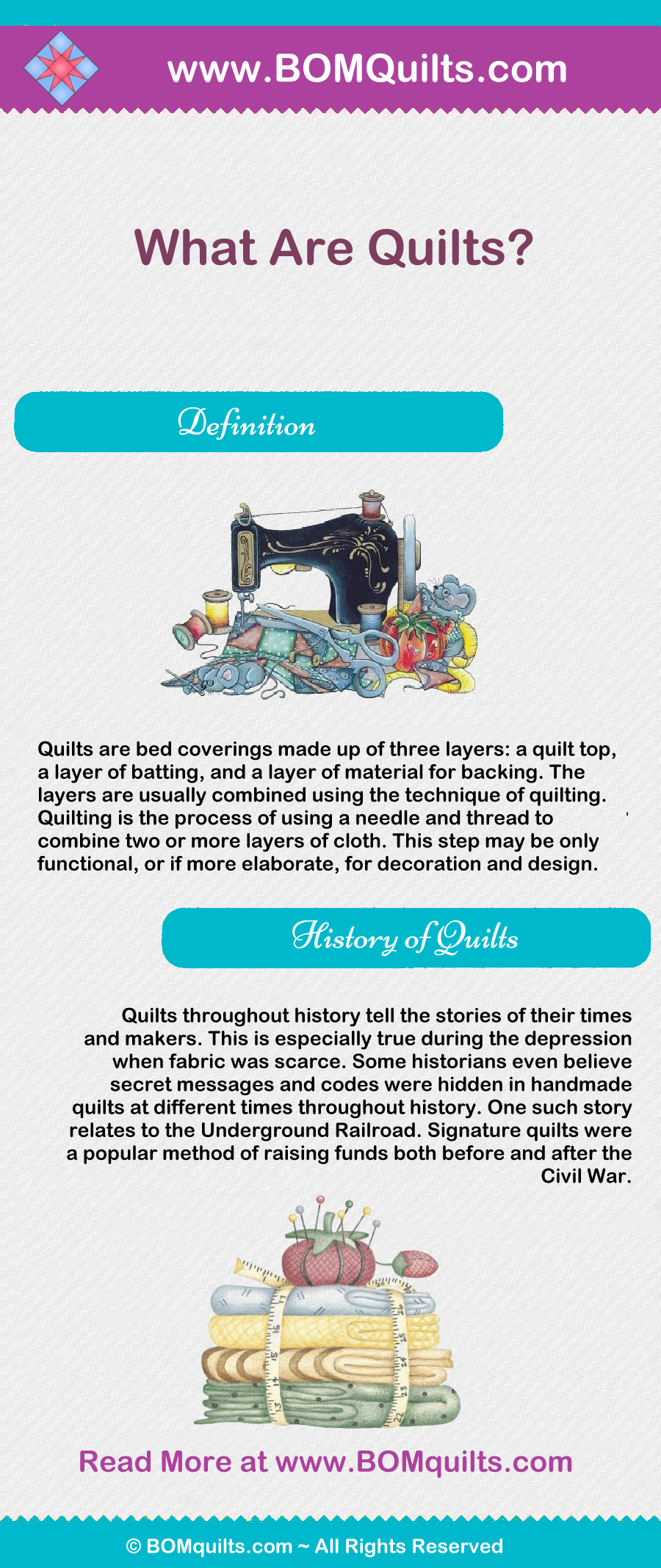
Quilts are bed coverings made up of three layers: a quilt top, a layer of batting, and a layer of material for backing. The layers are usually combined using the technique of quilting. Quilting is the process of using a needle and thread to combine two or more layers of cloth. This step may be only functional, or if more elaborate, for decoration and design.
Tying is another method of connecting the layers in quilts together. This method is usually chosen when a quilt is needed quickly for functional purposes. The three layers still need to be prepared and basted. Thread, string or yarn is used for the process. Square knots are used to finish off the ties, which are placed 3-5″ apart all over the quilt. A quilt that is tied is sometimes called a comforter.
Once upon a time quilts were created for necessity. Today, creating quilts has become an art form. Gifted quilters are called fabric artists instead of the outdated seamstress or quilter. Not only are bed quilts popular, but quilted clothing and wall hangings as well. Handmade quilts may sell for hundreds of dollars and hang on museum walls, not just bed frames. Amish quilts from Pennsylvania and Ohio are especially sought after, as are vintage and antique quilts.
If you are lucky enough to have inherited or purchased such an heirloom, taking proper care of it will maintain and perhaps increase its value. Quilts should never be stored in plastic bags, cardboard boxes or wooden trunks. The best way to store a quilt is by wrapping it around the cardboard found in products such as carpet. Quilts should be aired at least twice a year, but not in direct sunlight. Very old quilts should be aired flat to avoid stressing the stitches. There is always a risk in washing antique fabric. Spot test it first. If you are using a machine, wash in cold water with a mild detergent and a gentle cycle. Dry your quilt on a flat surface. Using a fan and rotating it will speed up the drying process.
Quilts in Everyday Life, 1855-1955: A 100-Year Photographic History
Quilts throughout history tell the stories of their times and makers. This is especially true during the depression when fabric was scarce. Some historians even believe secret messages and codes were hidden in handmade quilts at different times throughout history. One such story relates to the Underground Railroad. A certain quilt pattern would mean it was safe for escaping slaves to continue on their journey. Not all historians believe this theory, however it is true that signature quilts were a popular method of raising funds both before and after the Civil War. Signatures were added after a donation was made. These quilts were also known as friendship quilts.
While not all historians agree on this usage in the past, it is becoming increasingly popular today. Memory quilts and t-shirt quilts are also recently popular and timeless treasured gifts. Technology has even made it possible to add photos to fabric. Quilts are still used to raise money at raffles and charity events. Quilt guilds are being created and growing at a rapid rate, preserving and passing on treasured patterns and techniques.

